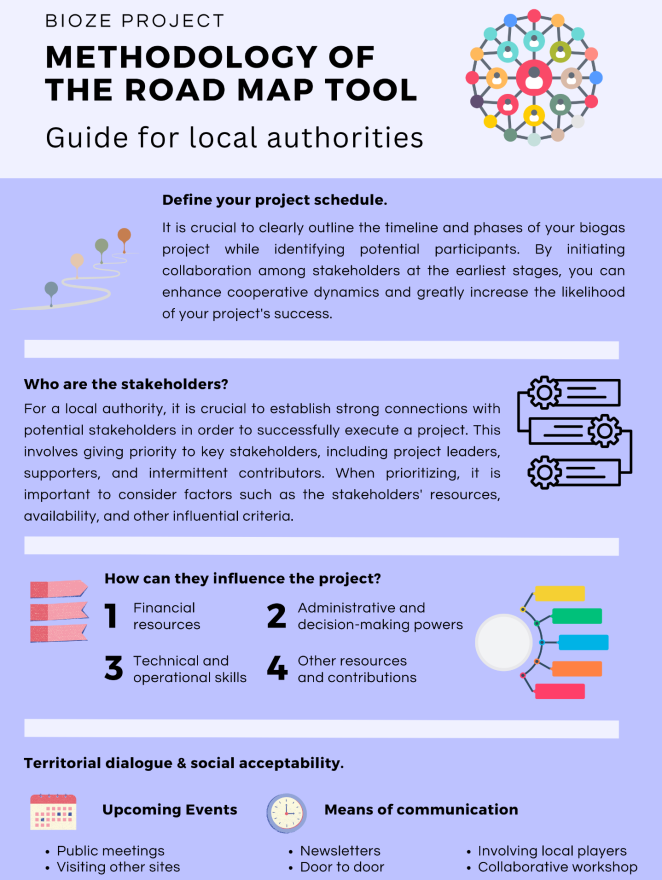Main content
Image

The roadmap is a methodology developed for local authorities to achieve 2 goals:
- having a better understanding of all the steps in a bioenergy project and the role of the local authority,
- displaying feedback from a given exemplary bioenergy project.
The methodology has been developed for a biogas project, but can easily be adapted to a woody energy or other renewable energy projects.
The steps of the methodology are:
- Define your project schedule - the milestones of a biogas project: from the initial contemplation phase to the commissioning of the site, a biogas project progresses through multiple stages. On average, this implementation takes about 3 to 4 years.
- The proximity matrix: the objective is to identify the key dialogues that the local authority is currently engaged in or should establish with other stakeholders. Prioritizing these proximities provides an overview and allows for the establishment of new collaborative dynamics, especially with new stakeholders.
- The influence matrix: this step aims to enhance the understanding of the stakeholders involved in your project. It covers key aspects such as when they come into the project, the nature of their involvement, and the level of influence they have (whether it is positive, negative, or neutral).
- Territorial dialogue & social acceptability: it is essential to determine the necessary criteria and establish appropriate mechanisms to ensure the success of the territorial dialogue : what are the means (visits, workshops, communication...) and what are the conditions (local anchoring of stakeholders, transparency of information...)? After identifying the resources and conditions, it is suggested to establish a comprehensive schedule to systematically organize the different stages of the territorial dialogue, providing a clearer understanding of how it fits into the decision-making process of the project.
